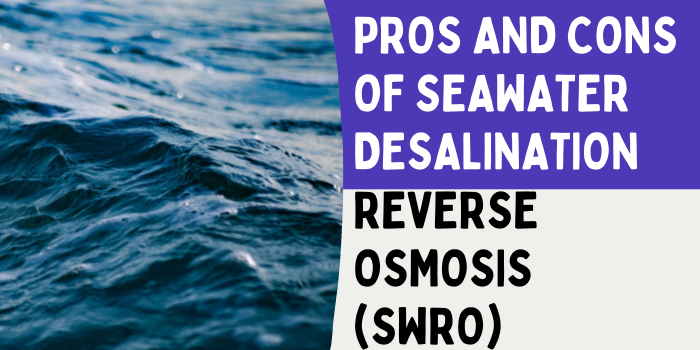Seawater desalination has been vastly dominated by two simple processes of Reverse Osmosis and distillation. While reverse osmosis is overpowering distillation as an option due to its effectiveness and less requirement of energy, the science world still craves for something more efficient. Yearly, a fair amount of money goes into turning the widely abundant seawater into fresh water. As more and more countries are opting to execute seawater desalination in their regions, it is, in fact, opening windows for advancements, however, there is still potential for the brightest minds to come up with systems that are sustainable and do not harm the environment.
The environment here is brought into the light due to a seemingly small problem which does not threaten the world right now but probably will if seawater desalination is done in its traditional ways. What we hope to point out here is the rejected water that is poured into the seas again.
- Scientists have already established that oceans maintain a very delicate balance between salt and fresh water to keep the weather in place.
- But with an increase in global warming and melting of ice caps, fresh water is dumped every day into the seas.
- Add to this the unmonitored dumping of concentrated salt water from the desalination plants around the world as a waste material.
As pointed out before, this does not have any particular effect now but can have in future when desalination plants would be seen in every city rather than just countries. It is therefore required to either develop the RO process that does not do so much harm or find some potential seawater desalination technologies that focus on desalinating the water without any harm to the environment.
A few years ago, way back in 2013 and 2012, the technology of using heat composites or bipolar electrodes was in news to be used in place of reverse osmosis. Both the processes had potential to be used on a massive scale but never made it to the top like reverse osmosis did. Heat composite pipes were used to evaporate water from the seawater that was splashed on the pipes through which hot water or gas was passed. The remaining sludge on the surface can be treated further to be diluted before releasing in the wild or can be used for research purposes. Bipolar electrode technique also held promise by dividing positive and negative ions leaving the filtration of sediments and substances to the RO.
Even though these discoveries never really showed much success outside of the research labs, there is still hope that one such discovery even though made by mistake, might change the face of the desalination industry for the good. Ampac USA is one of the few leading manufacturers of water treatment systems with a solution to every problem in the field.










